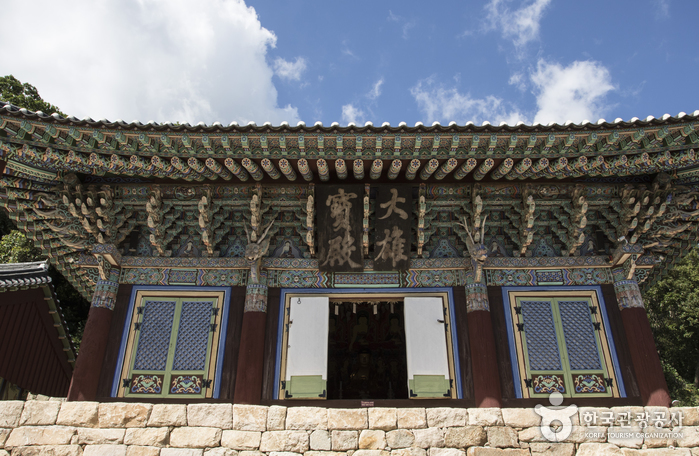Exploring Gangjin Baengnyeonsa Temple: A Journey Through History and Beauty
Gangjin Baengnyeonsa Temple is a historic and captivating tourist destination nestled in the heart of South Korea. Steeped in rich history and surrounded by breathtaking natural beauty, this temple offers visitors a unique opportunity to immerse themselves in the culture and heritage of the region. Let us take you on a journey through time as we explore the wonders of Baengnyeonsa Temple.
A Glimpse into the Past
Baengnyeonsa Temple, originally known as Mandeoksa Temple, has a fascinating history dating back to the Silla period. It is said to have been built during the reign of Silla King Munseong by Preceptor Muyeom. However, it was during the Goryeo period that the temple gained prominence when Preceptor Wonmyo rebuilt it in its current location, earning the name Baengnyeongyeolsa. Over the years, Baengnyeonsa Temple became a thriving center of Buddhism, producing eight preceptors of Goryeo and flourishing for over 120 years.
The Enchanting Forest of Common Camellias
One of the highlights of Baengnyeonsa Temple is the mesmerizing Forest of Common Camellias, designated as Natural Monument No. 151. As you make your way to the temple, you will be greeted by a magnificent forest of Camellia trees, spanning an impressive area of 9,917 square meters. Walking amidst the ruins of the Haenghotoseong Earthen Fortification, you will discover four stupas from the Goryeo and Joseon eras, adding a touch of mystery to the surroundings. The forest exudes a serene ambiance throughout the year, thanks to its lush green foliage. However, the real spectacle begins in November when the Camellia flowers burst into bloom, painting the forest in vibrant shades of red. This is a sight that truly captivates the hearts of visitors.
A Taste of Nature’s Bounty
As you continue your journey towards Dasan Chodang, you will be treated to another delightful surprise. A colony of tea fields and wild tea produced by Baengnyeonsa Temple unfolds before your eyes, creating a scenic landscape that seems straight out of a painting. The mountain where the temple is situated has nurtured wild tea fields since the Goryeo Era, earning it the name “Dasan.” It is here that the famous scholar Jeong Yak-yong, known by his pen name “Dasan,” was exiled and found solace. Take a moment to savor the beauty and tranquility of the tea fields, connecting with the profound history that has unfolded within these lands.
How to Get There
If you’re planning a visit to Gangjin Baengnyeonsa Temple, getting there is a breeze. You can start your journey by taking a bus for Gangjin at the Central City Express Bus Terminal. Once you arrive at Gangjin, head over to the local bus terminal and catch a bus for Mangho. From there, you’ll be just a stone’s throw away from the enchanting Baengnyeonsa Temple.
So, whether you’re a history enthusiast, a nature lover, or simply seeking a serene getaway, Gangjin Baengnyeonsa Temple is a destination that promises to leave an indelible mark on your heart. Embark on this unforgettable journey and immerse yourself in the beauty and heritage that South Korea has to offer.

